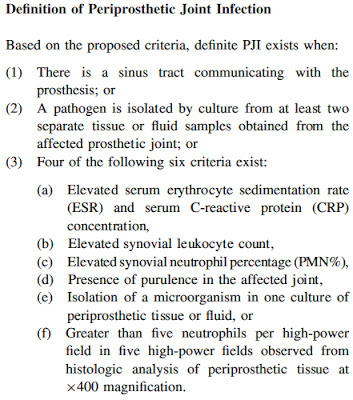


Sometimes a bacterium, virus or fungus can enter a person's joint directly through a wound. From there they can travel to the person's joints (or any place that is suitable for them to live). Once inside the body, the germs can get into the blood stream. The most common places of entry are a person's skin, throat, ears or nose. A germ first causes an infection elsewhere in the body, then spreads to one or more joints to produce infectious arthritis.Ī germ can enter through almost any place in a person's body. However, it is usually the result of a previous infection. Infectious arthritis may occur without any other infection present. That's why it is important to recognize the symptoms of infectious arthritis and get prompt treatment. However, without proper treatment, infectious arthritis can result in serious damage to the joints involved and may spread to other parts of the body. Treated promptly and properly, it is generally a curable form of arthritis. Unlike other types of arthritis, infectious arthritis is usually not a long-term illness. How does a person know if he or she has inflammation in a joint or another part of the body? Generally, that area becomes warm, painful, swollen, red and/or stiff. Doctors call an illness that is directly caused by any one of these germs an "infection." ArthritisĪrthritis means joint inflammation ("arthr-" = joint" "-itis" = inflammation). When they enter a person's body these germs generally cause the person to become sick. They can live in the air in uncooked food, plants, soil, animals or trash. Normally, these germs are not found in a person's body. There are three major kinds of germs that can cause infections: bacteria, viruses or fungi. It is also called "septic arthritis." InfectionsĪn infection is an illness that is caused by certain types of germs. This was true in both the general population and the immunosuppressed population.Infectious arthritis is a form of arthritis that is produced by an infection. We found that the synovial WBC differential (percentage synovial fluid PMNs) is a more sensitive predictor for nonprosthetic adult joint infection than the synovial absolute WBC count. The specificity when the %PMNs were at least 80, 85, and 90% was 0.500, 0.643, and 0.714, respectively. The sensitivity of %PMNs to predict positive cultures when the %PMNs was at least 80, 85, and 90% was 1.000, 0.929, and 0.786, respectively. Twenty-nine percent of patients with a synovial WBC <50,000/mm³ had positive cultures. The specificity when the %PMNs was at least 80, 85, and 90% was 0.598, 0.577, and 0.673, respectively. The sensitivity of percentage polymorphonuclear cells (%PMNs) to predict positive cultures when the %PMNs were at least 80, 85, and 90% was 0.932, 0.886, and 0.818, respectively. There were 12 patients with a synovial WBC <50,000/mm³ that had positive cultures. Of 36 patients who had a synovial WBC ≥50,000/mm³, 89% had positive cultures. There were 44 patients with positive synovial cultures. Medical history, including immunosuppressive disease or drugs, was recorded, and synovial fluid cell count, differential, and culture results were compared. In order to identify the predictive value of synovial fluid white blood cell (WBC) count and differential white blood cell count in identifying nonprosthetic joint infection in immunocompetent and immunosuppressed populations, we retrospectively reviewed 96 adult patients who underwent hip or knee aspiration because of symptoms suggesting a possible nonprosthetic joint infection.


 0 kommentar(er)
0 kommentar(er)
